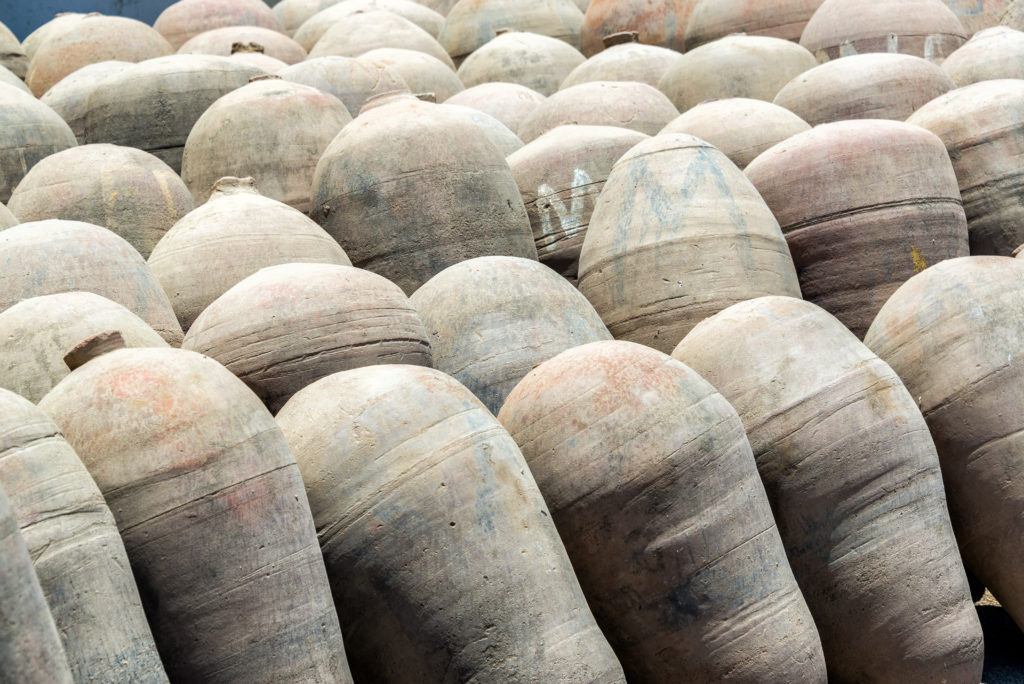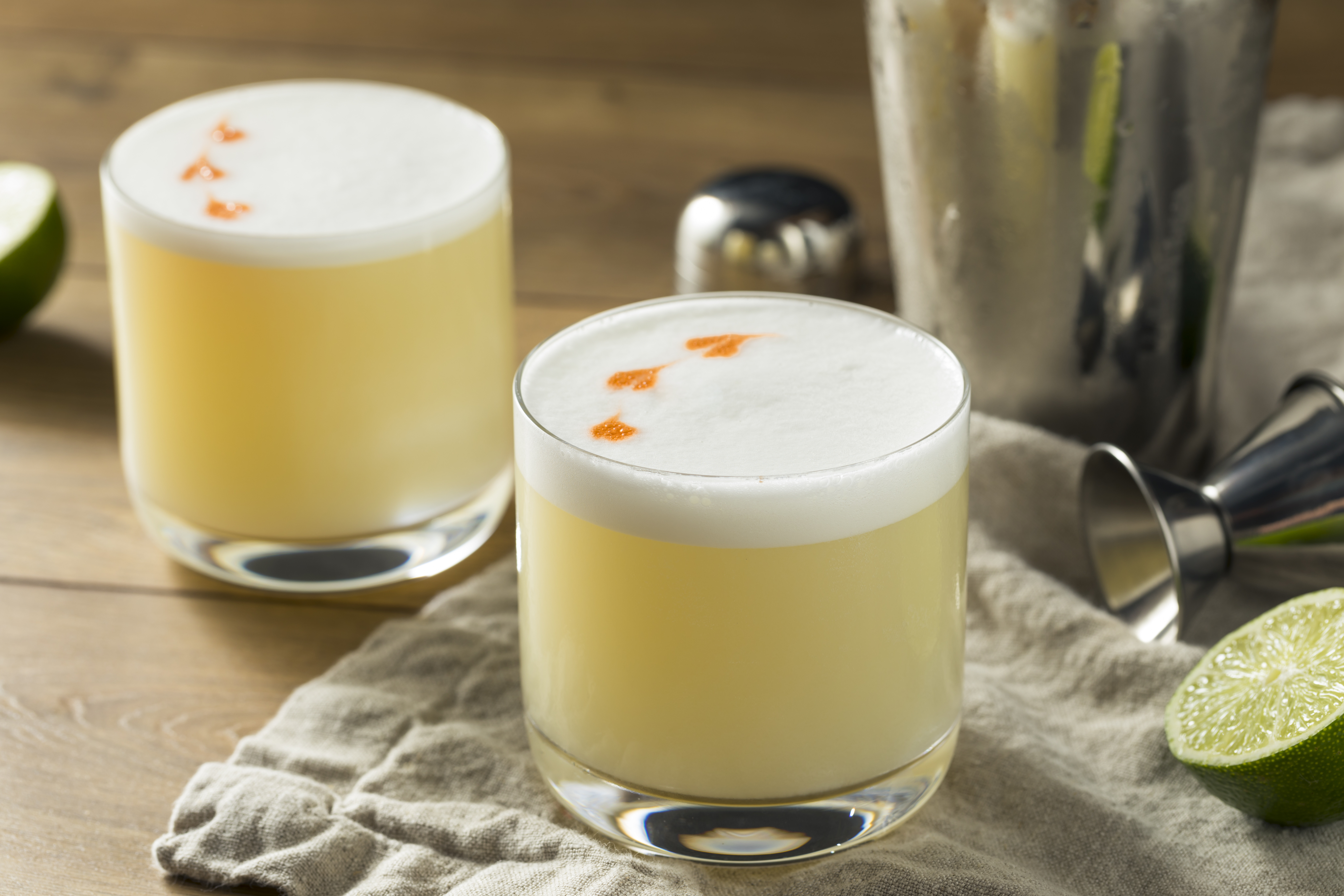Today marks Pisco Sour Day.
For us, this is a special day. Why you ask? Well, yes, we love Pisco Sours, but that is not the reason alone, nor the main reason. We’ll elaborate…
The Pisco Sour, while known to be a very, very popular Peruvian cocktail, was actually created at the Bank Exchange (a bar that used to reside where the Transamerica Pyramid now stands in SF), so it’s actually a hometown hero for us as we are based in San Francisco.
As well, Pisco as a liquor category has a direct line to wine production and the phylloxera outbreak that plagued European vines. When the winemakers of Europe were looking to preserve vitis vinifera affected by the outbreak, they took to the New World to find places to preserve grape varieties – hence the inclusion of Cabernet in Chile and Malbec in Argentina in the modern wine cannon. But other regions were planted with other grapes in South America in an effort of preservation and production.
The Spaniards brought 8 varieties to Peru for continued wine production: Quebranta, Negra Criolla, Uvina, Mollar – the 4 non-aromatic varieties, Moscatel (Muscat), Torontel (Torrontes), Italia, and Albilla – the 4 aromatic varieties.
Unfortunately, none of the vines produced great wines (or even drinkable wines for that matter) from the Peruvian soils, but innovative minds looked to distilling the grapes to make an ‘unaged Brandy’ that was housed in clay “Pisco” amphoras – hence the name for the liquor. What resulted was an ‘Eau de Vie’ of sorts, retaining the aromatic or non-aromatic nature of the grapes that was varietally specific, and untouched by oak, essentially removing them from the Brandy category.

Pisco Amphoras
It is not uncommon to hear Pisco referred to as an unaged Brandy, but that is only partially correct, just like likening it to Eau de Vie – also only partially correct.
Pisco is its own category, and is handled under strict rules the same as Cognac or Armagnac are under strict production laws in their home countries.
You may see “Chilean Pisco” in the marketplace, but that is an incorrect usage of the namesake – possibly illegal in fact. That product is actually “Aguardiente” as it is not pure distillation and water is incorporated in the process. Actual Pisco is only from Ica, Peru, and never aged or cut with any other liquid in its raw form.
There are multiple levels to Pisco, please see below:
- The entry level Pisco is actually quite refined as it’s a single varietal expression, labeled as Pisco Puro. Nothing but one variety is used in the distillation to preserve varietal accuracy and purity.
- The next level of Pisco is a blend curated and kept secret by the producer, this is Pisco Acholado, and no two are the same blend or alike when the product is completed.
- The top level of Pisco is made by distilling semi-fermented grape musts, known as Pisco Mosto Verde. This process increases the aromatics of the grape varietal while offering a smoother, richer texture to the spirit. Generally speaking these are always done in single varietal expressions, but there has been some Mosto Verde Acholado produced and sold in the US for the last decade or so, claiming higher honors due to Acholado being seen as higher than single varietal, but lack of market presence hasn’t really defined in the US markets which is “better” if you will.
All of the aforementioned Pisco levels are incredible on their own, but each offers a different lean on the base recipe for a Pisco Sour, which is generally egg whites, Pisco, lime, sweetner of some sort, and a few dashes of Angostura Aromatic Bitters (because egg whites don’t smell too fun on their own).
A non-aromatic grape can make the Pisco Sour lean more towards a tequila-like profile in the cocktail, where an aromatic grape can make a most floral and delicate cocktail, unlike anything you may have ever tasted. The Acholados make each Pisco Sour its own experience aside from the single varietal expressions, that can only be replicated by that specific producer’s blend, and while purists would say you’d never make a sour with a Mosto Verde, it will make for possibly the greatest mouthfeel and taste in a Pisco Sour you’ve ever encountered, that is, if you’ve taken the time to try through all the previous iterations.
A final point of note on this fine day: how to taste Pisco. There is an art to fully experiencing this fine spirit. First, there are specific Pisco glasses, you may want to try them out if you plan on diving deeper into the world of Pisco, essentially, they are the varietal specific Riedel glasses of the Pisco world. Secondly, swirl your glass, just like wine – allow some oxygen into the glass before taking in a deep breath of the aromatics. Next, take a small amount onto your palate, and allow it to take over your senses, holding it in your mouth for a moment before swallowing, then exhale. Finally, take a full sip to fully experience what the spirit has to offer. As Pisco is a pure, uncut spirit, the first sip is to kill any other flavors on your palate and fragrances in your nostrils. The second sip is the actual taste, all encompassing. Understanding this process not only allows you to fully enjoy the spirit, but will also get you kind remarks if you find yourself at a Pisco bar at some point in the future.
So on this special day, treat yourself to any form of Pisco, and finish your journey with a Pisco Sour made with your Pisco of choice, and remember how close to wine Pisco is, and how it was born of wine to begin with.
Cheers!

